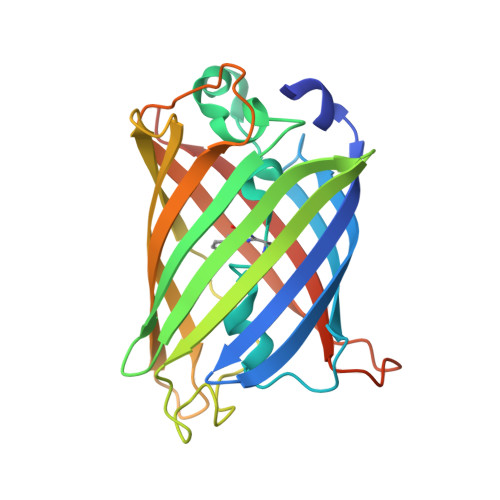Surface Properties Determining Passage Rates of Proteins through Nuclear Pores.
Frey, S., Rees, R., Schunemann, J., Ng, S.C., Funfgeld, K., Huyton, T., Gorlich, D.(2018) Cell 174: 202-217.e9
- PubMed: 29958108
- DOI: https://doi.org/10.1016/j.cell.2018.05.045
- Primary Citation of Related Structures:
5MSE - PubMed Abstract:
Nuclear pore complexes (NPCs) conduct nucleocytoplasmic transport through an FG domain-controlled barrier. We now explore how surface-features of a mobile species determine its NPC passage rate. Negative charges and lysines impede passage. Hydrophobic residues, certain polar residues (Cys, His), and, surprisingly, charged arginines have striking translocation-promoting effects. Favorable cation-π interactions between arginines and FG-phenylalanines may explain this apparent paradox. Application of these principles to redesign the surface of GFP resulted in variants that show a wide span of transit rates, ranging from 35-fold slower than wild-type to ∼500 times faster, with the latter outpacing even naturally occurring nuclear transport receptors (NTRs). The structure of a fast and particularly FG-specific GFP NTR variant illustrates how NTRs can expose multiple regions for binding hydrophobic FG motifs while evading non-specific aggregation. Finally, we document that even for NTR-mediated transport, the surface-properties of the "passively carried" cargo can strikingly affect the translocation rate.
Organizational Affiliation:
Department of Cellular Logistics, Max Planck Institute for Biophysical Chemistry, Göttingen, Germany.

















